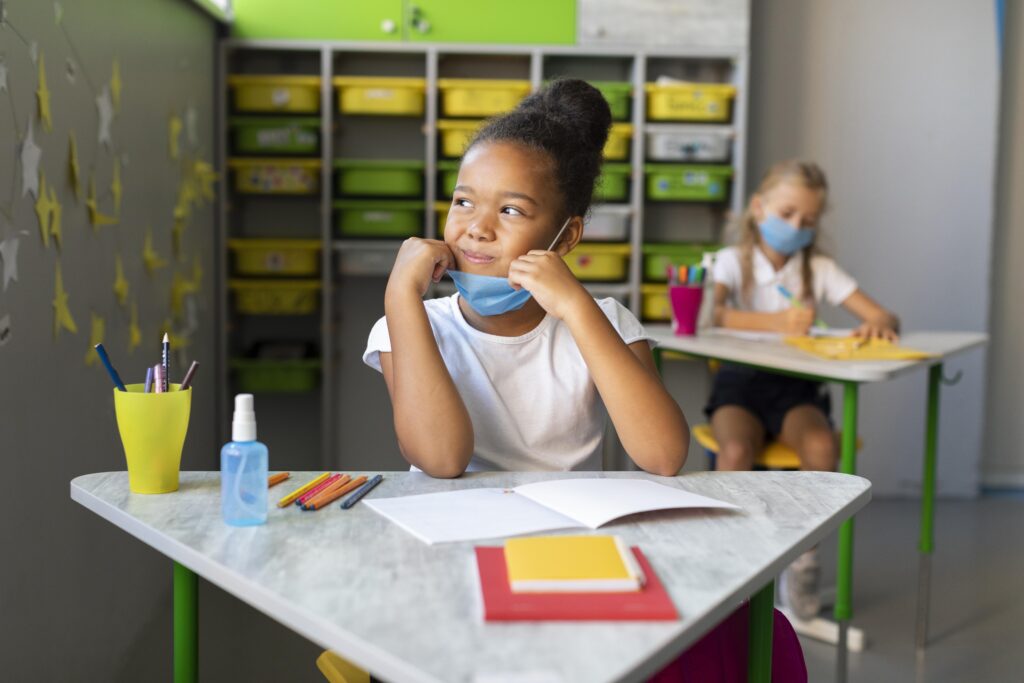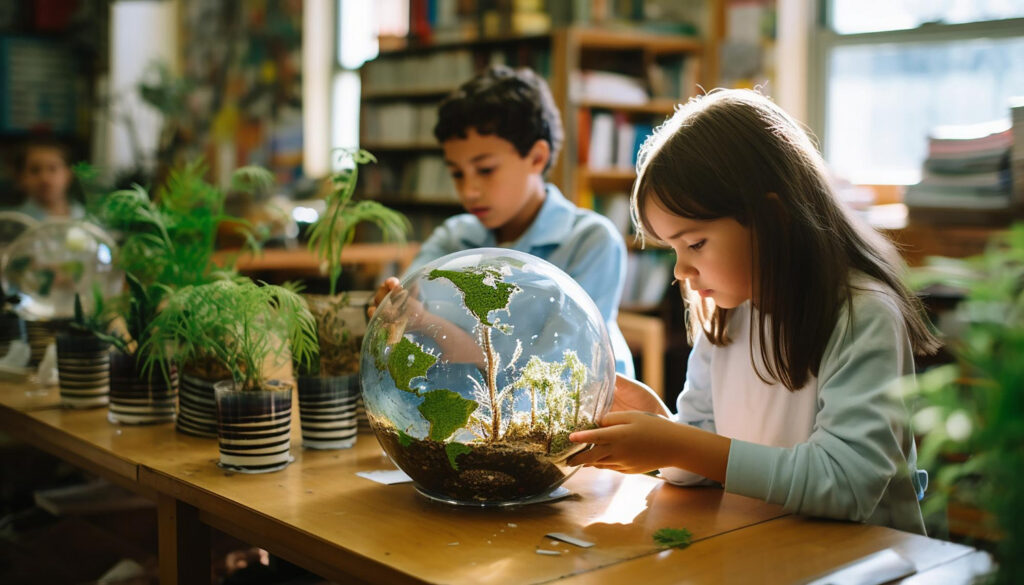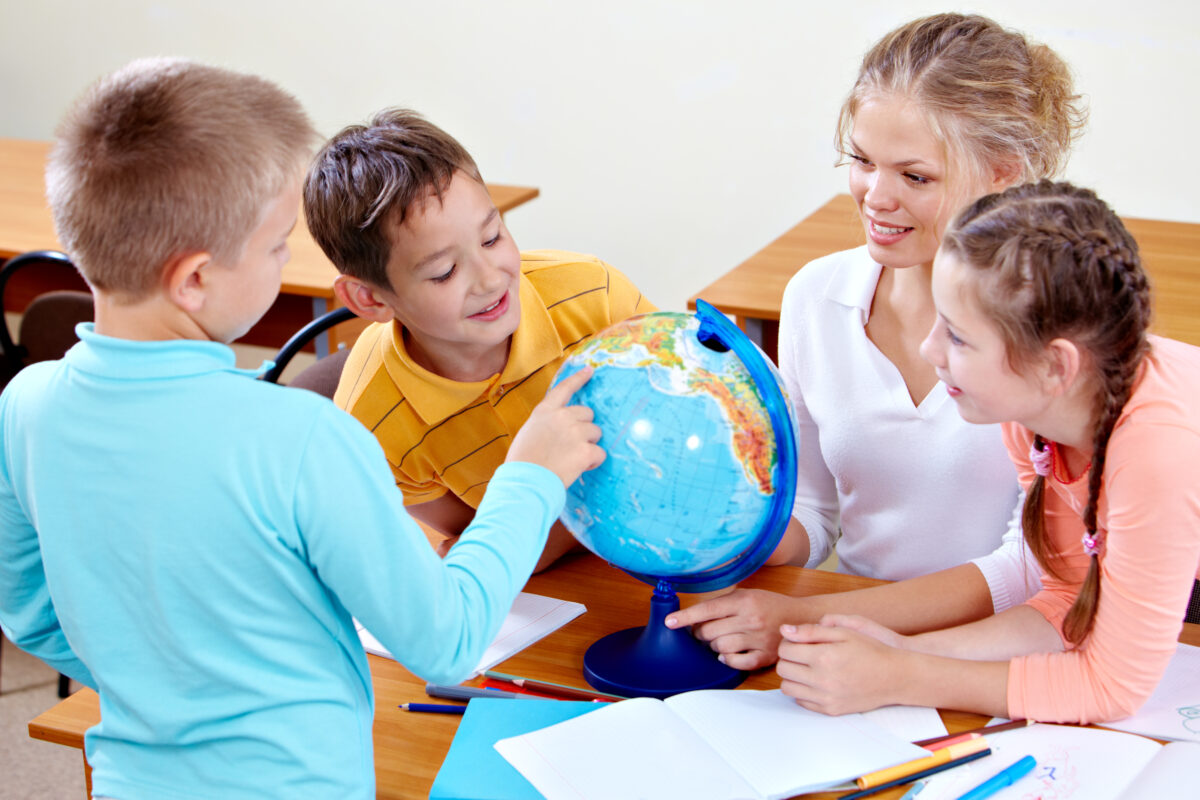Studies have shown that a pleasant early learning environment helps the development of a child’s brain. This extends to other areas of learning in the future. In today’s digital age, children need a loving atmosphere with ample resources, space, affection, commitment, patience, and encouragement to boost their sense of security.

This article is going to explore what is meant by the idea of a learning environment. We will emphasize the significance of an enjoyable learning atmosphere and offer several practical techniques to enhance the teaching and learning environment.
What is a Positive Learning Environment?
A learning environment includes more than just aesthetically pleasing components. The concept has three primary components: the physical, social, and emotional contexts. In order for a high-quality teaching plan to be effective, these aspects must coexist in balance.
Establishing clear classroom rules sets the tone for a good learning environment by educating students of responsibilities. Developing that framework will enhance kids’ sense of security, provide an in-depth awareness of their necessities, and foster a good state of well-being. This pertains to children all over every level of schooling, including elementary, middle, and high school.

It is essential to remember that establishing a positive atmosphere for learning is a continuous effort, not something that happens once. It requires renewed focus yearly.
Provide Emotional Support, Love, and Attention
Children require an emotion of self and connection to thrive in the outside world. These are simply two major emotional demands that must be addressed for learning to occur.
Parents and families fulfill emotional needs by offering support, affection, and attention. No youngster can flourish without experiencing affection and being responded to. The presence of engaged parents and a supportive, affectionate family can contribute to the cultivation of self-motivation in children, thus accelerating their learning process.
Avoid involving your children in conflicts and disputes wherever feasible. Negative atmosphere at class hinders learning by distracting the kid and making them focus on adult issues, creating an uneasy setting.
Enhance interactions between students
You can encourage good student connections to enhance kids’ feeling of being part of something, boost engagement, and create a caring classroom atmosphere.
Here are two efficient strategies that you can easily put into practice:
Listen to the pre-class conversations among students. They often get involved in discussions on topics they are enthusiastic about. That information can assist you in identifying topics you should inquire about, which may be helpful in establishing an enduring connection. Upon discovering that a student practices ballet via listening, you might inquire further about it at your next encounter with the student.
Develop personalized teachings to make students feel unique. For instance, while crafting a sample answer to a writing challenge, you may choose to incorporate a student’s name and their known leisure activity. This method effectively highlights, motivates, and engages learners who are typically hesitant to participate.
Schools must establish a conducive social atmosphere for learning.
Each school should have a comprehensive and globally recognized school-wide behavior strategy to address and eradicate negative behavior. To maintain a positive learning environment, schools must handle any behavior that hinders academic and social performance or undermines the self-esteem of staff or students promptly and efficiently.
Many research and studies have show that school can enhance behavior by:
- Understanding the school culture clearly.
- Ensuring strong dedication from staff and parents to the school’s vision and goals.
- Ensuring strong support and communication between leaders and personnel.
- Implementing the school’s rules and initiatives meticulously.
- Maintaining high standards for all students and staff, and a belief in the equal importance of all students.
Provide an organized framework to encourage positive behavior in the classroom.
Setting high expectations for your kids is crucial as you establish the standards for student conduct and build the groundwork for student achievement. For this task, you must establish clear classroom rules and practices right from the start of the first day.

One helpful recommendation is to phrase your classroom rules in a nice way. For instance, rather than stating “don’t disrespect other students,” you may say, “All students in class will be respected at all times.” Presenting things in a favorable light, even in a minor way, may have a significant impact by demonstrating that expectations are linked to positive actions.
Promote Reading
Regular exposure to books and reading at home helps children acquire intellectual capabilities more easily, such as:
- Focus Recollection
- Lexicon Analytical abilities
- Language proficiency in spoken communication
- Listening abilities
- Life skills
- Comprehension of concepts
- Imagination
- Creativity
- Psychological development
- General knowledge
It’s important to expose young children to picture, non-fiction, fiction, and reference books. Books about cooking and crafts are excellent for reading and engaging in practical activities.
Since kids pick up on their parents’ reading habits, there’s a better likelihood that their offspring will enjoy books as well.
Youngsters are less prone to think of reading as a chore when they witness parents reading for pleasure. Check through some of your child’s projects, report cards, and resources together by logging into their parent site.
When a child enjoys reading, trips to the library are usually entertaining. Not only is it appropriate for reading comprehension, but it also teaches life skills such as responsible borrowing and returning, as well as how to take care of property that is not their own. These days, self-checkout is an option in many libraries.
Allow your child to take charge of the entire visit by letting them choose and check out the books they want. Make reading bedtime stories to each other a nightly ritual.
It’s time to have some fun!
Burnout can result in the strain to concentrate only on academic subject, which can sometimes lead to burnout
Make time to include educational activities into your lessons that also happen to be entertaining in a way that will surely please your students. Hearing learners laugh while having a good time and cooperating while studying is one of the most satisfying things one can do.
Your children will succeed if your classroom and school have a healthy learning environment. As our goal at Nishitha International School is to assist every kid who loves learning, you will actually be laying the groundwork for that to happen.
For students in grades 1 through 5, Nishitha’s game-based skill practice helps turn learning into an experience. Additionally, you can differentiate instruction for each student and discover other methods to enhance their learning with the resources included in your free teacher account.


